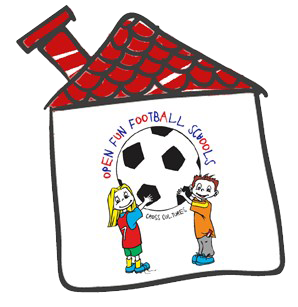Football Technique
Finishing
In a classic football training the aim of finishing is improving the technical and tactical aspects of attack and defence. Playing football at our school means acquiring the first tactical knowledge (changing positions, lines of movement, opening up, covering a player, and covering a zone), but much greater attention is given to the improvement of the basic football technique, especially the kicking technique. Shooting at a goal and scoring is the greatest satisfaction a player can have, especially a child. Coaches have an opportunity to heat up the working atmosphere by organising different competitions (with a lot of laughter and joy), cheering, applauding, scoring goals, and defending.
EXAMPLES OF ATTACKING EXERCISES FOR INDIVIDUAL WORK
- Dribbling the ball and shooting from three different directions (with the full foot, its inner or outer side).
- Shooting at the goal after juggling, receiving, leading, and after receiving a high ball.
- Shooting at the goal after a 1:1 dribbling, semi-actively or with a set dribbling.
- Shooting at the goal after transferring the ball (a double or back pass, or a set shot)
Shooting at the goal linked to a 1:1 game (passively or semi-actively).
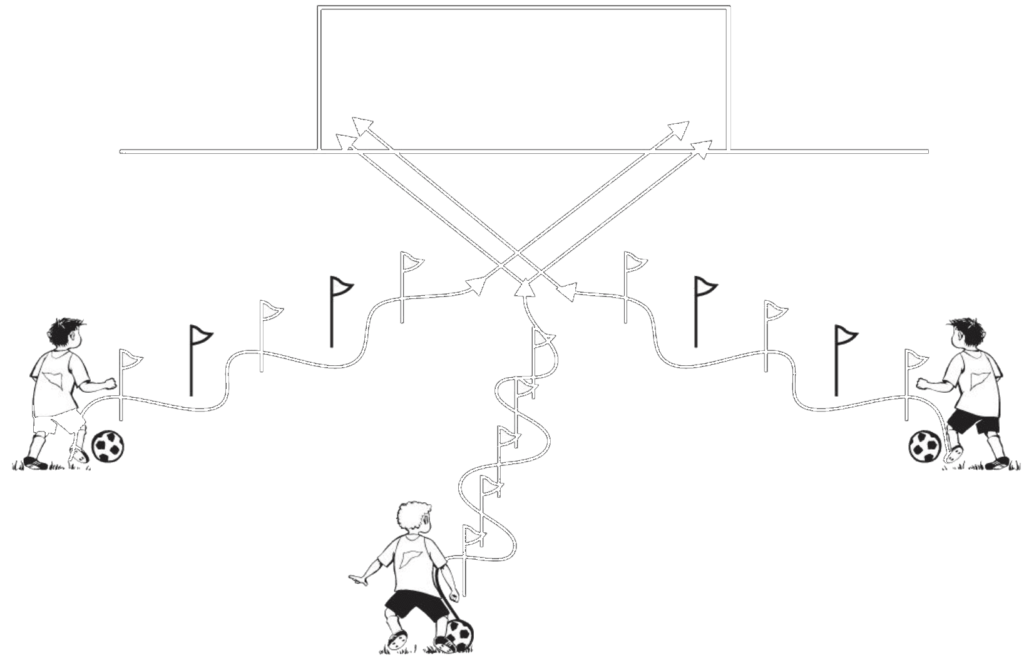
EXAMPLES OF EXERCISES IMPROVING THE COOPERATION OF TWO ATTACKERS
- Attacking through the middle of the pitch (crossing and twisting).
- A double pass and shot on goal with passive obstruction.
- A back pass/left behind ball and shot on goal.
- A diagonal pass, change of position and shot on goal.
- Taking over the ball (at the 16-metre line) and shot on goal.
Cooperation between two players (2:1) and shot on goal.
SHOOTING AFTER TAKING OVER THE BALL
All players in a group participate; they are divided into two or more groups, playing on one, two, or more goals. One by one, players from group A lead the ball towards their teammates from group B who, upon meeting players from group A, take over the ball and play it to the coach (standing at the 16-metre line). The coach returns the ball playing a double pass for player B to take an immediate shot at the goal. After completing the action, players exchange their positions.
Cooperation between two attackers in a 2:1 game

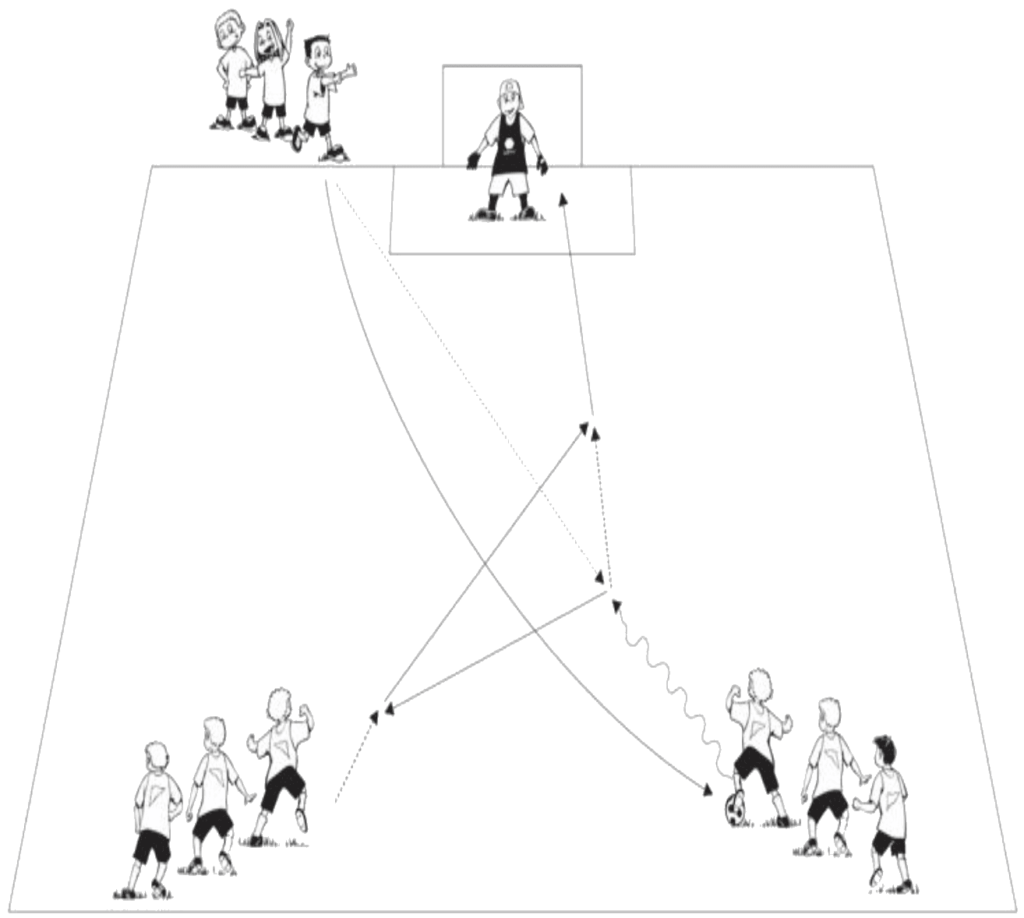
Passing the ball diagonally or in depth, leaving the ball for the team-mate and taking the shot

Diagonal - in-depth pass, with a fake double-pass and shot on goal
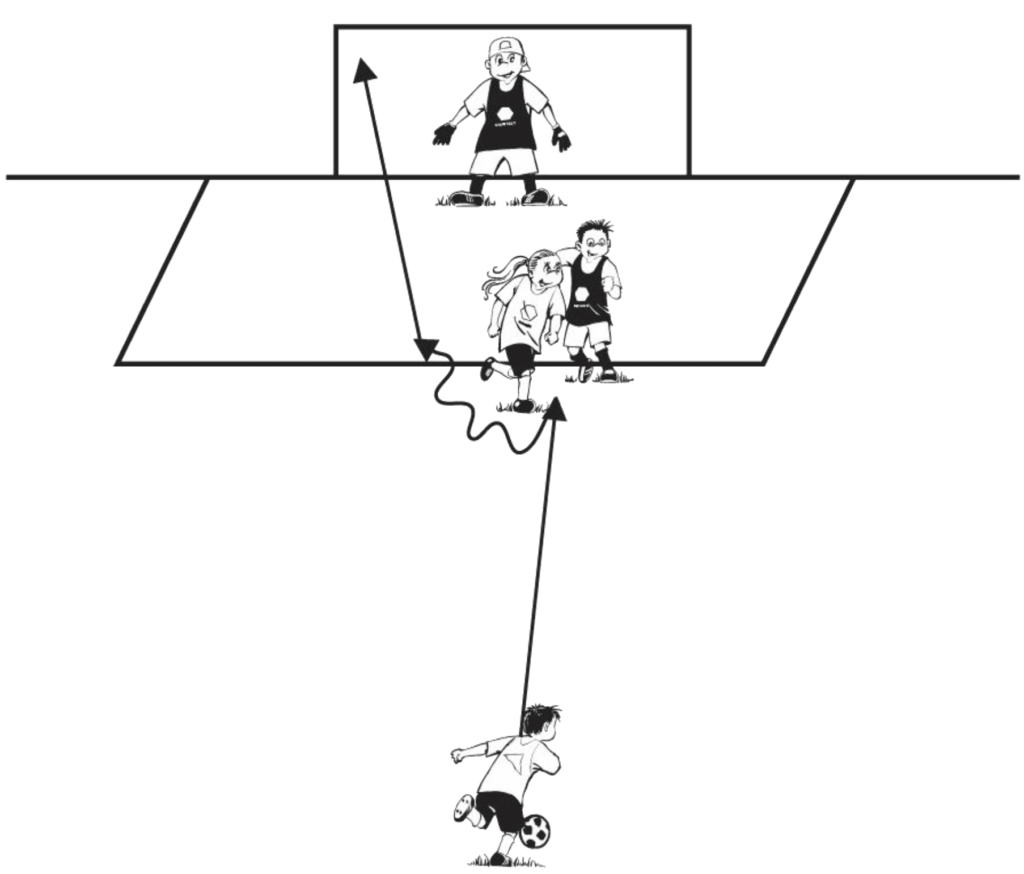
The players are in front of the goal
Balls are passed and dribbled towards the goal.
The coach is pointing at the spot from which the shot is to be taken, while the passer is semi-actively obstructing the attacker.
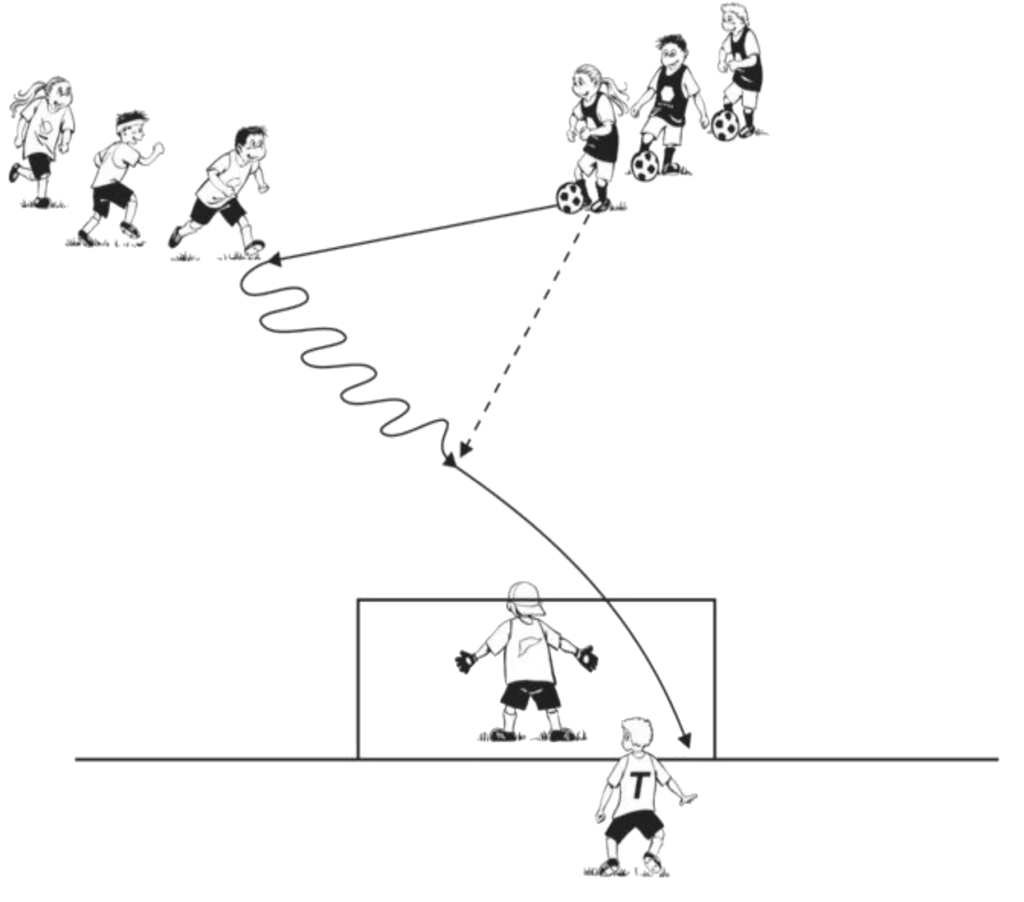
A 1+7:7+1 game
Mark the lines in front of both goals at about 8 or 10 metres distance. Every goal that is scored behind the line counts twice (emphasise the full-instep shot).
A 2:2 game with the coach serving the ball
Working for two minutes and make two-minute breaks three or four times. The coach throws/serves the ball for a 2:2 game with a finishing. A new ball is served every time a goal is scored or missed to keep on playing without interruptions.
After a number of attempts or after a period of time, teams change, as does the goalkeeper.
FINISHING – A GAME OF NUMBERS
Players are divided into two columns, their backs to the goal in line with the six yard box. A ball is placed at the distance of the penalty-kick and two cones at the edge of the eighteen yard box. Every player is given his/her own number (1, 2, 3, 4, 5 etc.) and at the coachs call-out, the two players from each column race to the cones and back. The one who gets to the ball first shoots at the goal. The player wins a point for shooting at the goal and should he/she score a goal his/her group gets two points. The goal is made shorter with cones set at one metre from the goal-posts. Players can start from a squatting, sitting, lying, or kneeling position.
The shooting-distance will depend on the ability of the group.
Players must not make too long a pause between the shots. Observe the queue. One group can play one of those small games while the other shoots at the goal.
